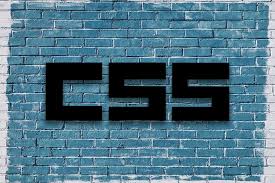CSS Course

About Course
This CSS (Cascading Style Sheets) course typically covers the fundamentals of styling web pages, enabling students to design visually appealing and user-friendly websites.
Each topic includes lectures, hands-on exercises, quizzes, and projects to reinforce learning and practical application of CSS concepts.
Module 1: Introduction to CSS
– Understanding the role of CSS in web development
– Basic syntax and structure of CSS
– Inline, internal, and external CSS
– CSS comments and best practices
Module 2: Selectors and Specificity
– Different types of CSS selectors (element, class, ID, attribute, pseudo-class, pseudo-
element)
– Specificity rules and how they affect style application
– CSS inheritance and cascade
Module 3: Basic Styling
– Applying styles to text (font properties, text color, text decoration)
– Styling backgrounds (background-color, background-image, background-repeat,
background-size)
– Working with borders and outlines
Module 4: Box Model
– Understanding the box model (content, padding, border, margin)
– Box-sizing property and its impact on layout
– Margin collapsing and its implications
Module 5: Layout Techniques
– Floats and clearing floats
– CSS Flexbox layout
– CSS Grid layout
– Comparison of layout techniques and their use cases
Module 6: Responsive Web Design
– Principles of responsive design
– Using media queries to create responsive layouts
– Flexbox and Grid for responsive design
– Testing and debugging responsive layouts across devices
Module 7: Transitions and Animations
– CSS transitions (properties, duration, timing function)
– CSS animations (keyframes, animation properties)
– Creating interactive elements with CSS animations
Module 8: CSS Frameworks
– Introduction to CSS frameworks (Bootstrap, Foundation, etc.)
– Using pre-built components and grid systems
– Customizing and extending CSS frameworks
Module 9: Advanced CSS Techniques
– CSS preprocessors (Sass, Less) and their features
– CSS variables (custom properties) and their benefits
– CSS methodologies (BEM, SMACSS) for scalable and maintainable code
Module 10: Browser Compatibility and Optimization
– Dealing with browser compatibility issues
– Optimizing CSS performance (minification, concatenation, etc.)
– Cross-browser testing tools and techniques
Module 11: Project Work
– Applying CSS concepts to real-world projects
– Building custom layouts and styling components
– Solving design challenges and implementing responsive designs
Module 12: Best Practices and Future Trends
– CSS best practices (code organization, naming conventions, etc.)
– Keeping up with CSS specifications and new features
– Exploring emerging trends in CSS (CSS Grid, variable fonts, etc.)
Each module includes lectures, hands-on exercises, quizzes, and projects to
reinforce learning and practical application of CSS concepts.
Course Content
Introduction to CSS
-
Understanding the role of CSS in web development
00:00 -
Basic syntax and structure of CSS
00:00 -
Inline, internal, and external CSS
00:00 -
CSS comments and best practices
00:00 -
QUIZ
Selectors and Specificity
Basic Styling
Box Model
Layout Techniques
Responsive Web Design
Transitions and Animations
CSS Frameworks
Advanced CSS Techniques
Browser Compatibility and Optimization
Project Work
Best Practices and Future Trends
Student Ratings & Reviews

